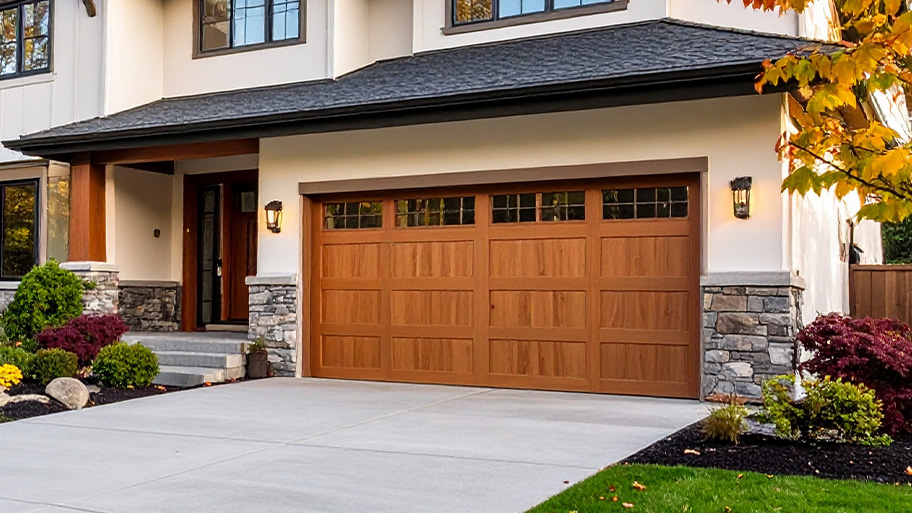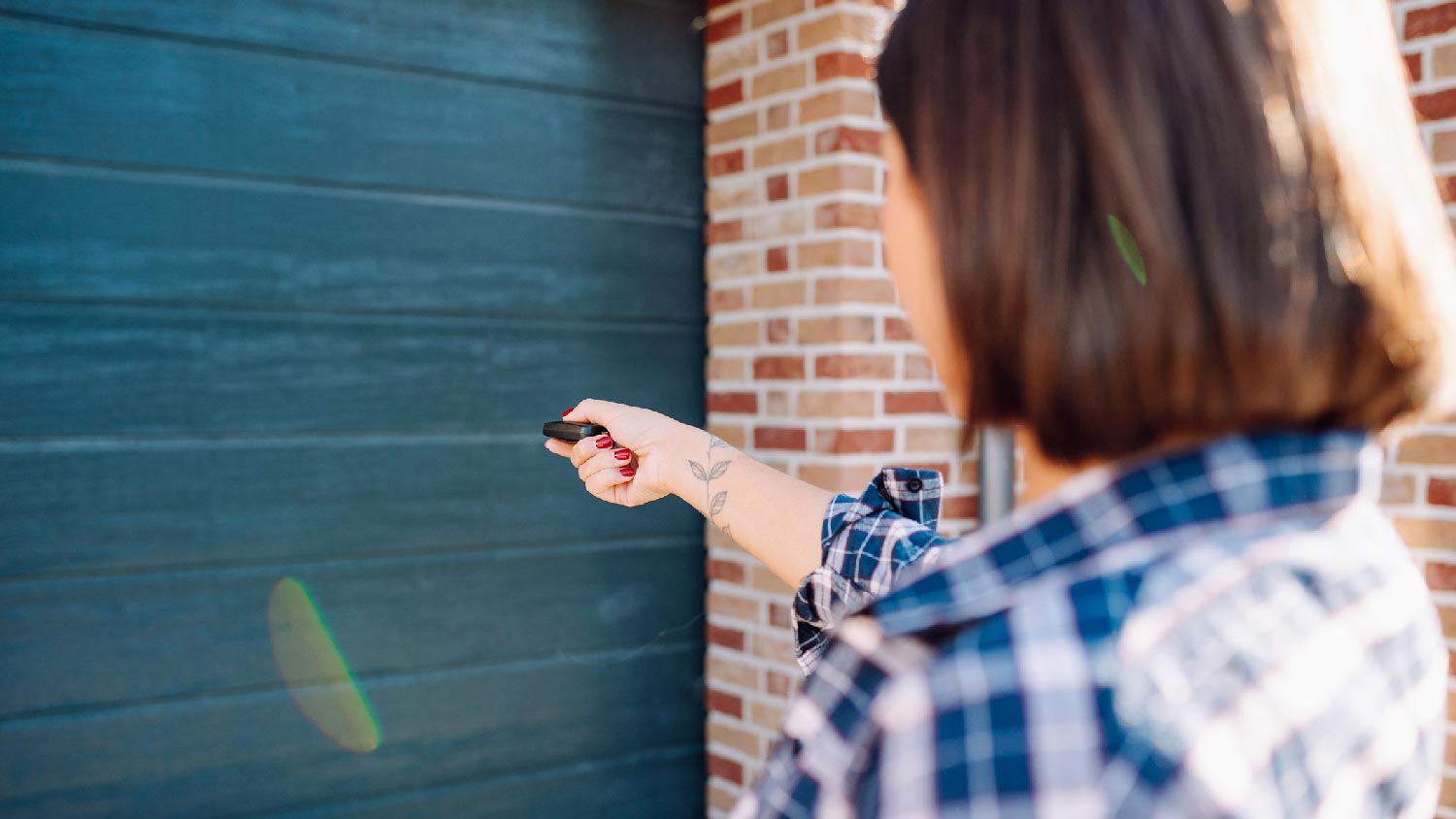
Replacing a garage door is necessary to add security and value to your home. Learn how each door type affects the total cost of this project in Columbus, OH.
Troubleshooting your opener is as easy as pressing 1, 2, 3


Dirt and grime can lead to stuck keys.
Rain, sleet, snow, and wind can wear out a keypad over time, leading to wiring issues.
If necessary, a new garage door opener costs $378 on average.
Troubleshooting your garage door opener can feel a bit like trying to break into your own home. But while a faulty keypad may seem like a cause for alarm, there are a few simple reasons why it’s not working that won’t involve much time or energy to fix—like built-up dirt and grime.
So before you get out your crowbar, read these reasons why your keypad may not be working and what you can do to fix it.
There are a few reasons why your garage door pad isn’t working. A garage door opener works via radio transmission to operate, so if there’s an interruption in the signal or an issue with the wiring, your garage door will stay firmly closed. Here are a few things that could be causing your issues.
Incorrect PIN: The issue could be as easy as an incorrect PIN. If your keypad is new or you just moved into your home, your temporary PIN may have expired. Or, you simply forgot your new PIN. Either way, using the wrong code too many times will lock your opener (and your home’s entry).
Stuck keys: Your keys may be stuck, which can cause an error when reading your code. If you live on a gravel road or near a construction site, dirt or debris can get lodged under your keys, causing them to stick.
Wrong horsepower: If your garage door opener horsepower isn’t up to snuff, it won’t be able to lift your door. A standard two-car garage needs a 1/2-horsepower garage door opener. But you'll need higher power if you have a wood garage door or a three-car garage.
Dead batteries: You may think your keypad is wired into your electrical system, but it likely requires batteries. If your buttons don’t light up when you push them or you have to push them extra hard to work, it could be a battery issue.
Frayed or disconnected wires: If the batteries aren’t the issue, it could be the keypad’s internal wiring. Over time, outside elements can cause the wires to fray or wear down, leading to connection issues.
Broken keypad: Rain and snow can lead to cracks and holes in your keypad. If you’ve ruled out every issue above, you could need an entirely new keypad.

If you’re locked out of your house, don’t fret yet. Here are six ways to troubleshoot your door keypad to avoid disaster.
The first and easiest thing you should do is change out your keypad’s battery. Most models use a 9-volt battery, although some newer models may require a 12 volt. Once you change out the batteries, reprogram your system to your desired PIN.
If you live in the northern part of the country, consider a lithium battery, as it’s better suited for frigid winters.
Dirt and grime can build up on your keypad, causing issues with its operation. Brush the pad with a soft brush to remove any surface-level dust, followed by a swipe of an alcohol wipe. If you have an air compressor, you can blow air into the small spaces between keys.
If one key continually won’t work or you have overall issues with consistency, the wiring could be the issue. Open your keypad and check the condition of all the internal wiring, looking for fraying or other blatant problems that don’t need an electrician’s eye to catch.
If the wiring within the keypad itself looks fine, check your garage door wiring. The problem could be inside your garage rather than outside on your keypad. But your opener’s wiring is a bit more complicated than your keypad, so unless you have electrical experience, hire a professional garage door repair company to help.
Your PIN could be outdated or expired. Follow the manufacturer’s instructions for resetting your PIN, choosing a new code that doesn’t overlap in numbers with your existing one. If your new PIN works with the latest numbers, it could be a sign that the numbers in your old PIN are worn out or dirty.
If all else fails, completely reboot your garage door opener. You may just need to unplug and plug it back in, similar to restarting your Wi-Fi or computer. The plug is likely on the roof of your garage near the opener.
Once you locate it, unplug the opener and wait five minutes. Then, plug it back in and wait for it to start back up. Recheck your keypad to see if the reset fixed your connectivity issue.
Unfortunately, if none of these troubleshooting tips help, you may need to completely replace your opener or keypad. The average garage door opener costs $378 and can be installed quickly and efficiently. The installer can help program and reset your system to make sure everything works how it should.
You can also buy a garage door opener and install it yourself, but it’s lengthy and complicated. The average garage door weighs about 200 lbs, leaving little to no room for error during installation.
From average costs to expert advice, get all the answers you need to get your job done.

Replacing a garage door is necessary to add security and value to your home. Learn how each door type affects the total cost of this project in Columbus, OH.
.jpg?impolicy=leadImage)
This guide shows you what you can expect for garage door roller replacement cost if your rollers are sticking or screeching.

Need extra clearance for getting your vehicles into your garage? Find out how much it costs to convert two garage doors to one double door in this cost guide.

Though you can install a garage door on your old tracks, you might not want to. Keep reading to learn if you can install a new garage door on old tracks.

This guide reviews the six main types of garage door openers—with tips for choosing the right one for your budget and your needs.

Replacing a garage door opener can help you get in and out of your garage without delay. Learn how to replace a garage door opener like a pro in this guide.